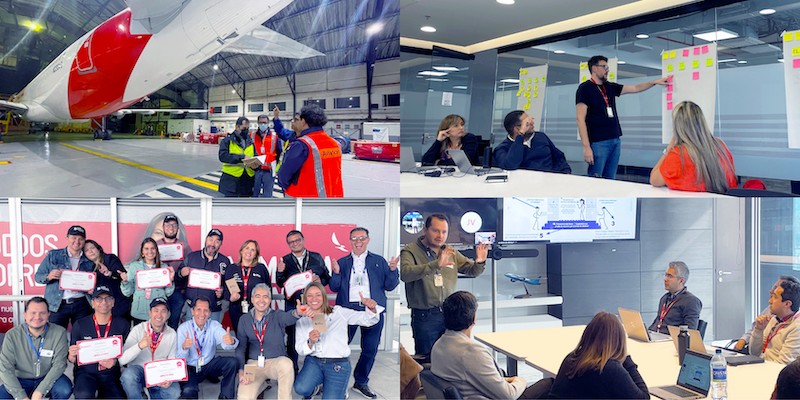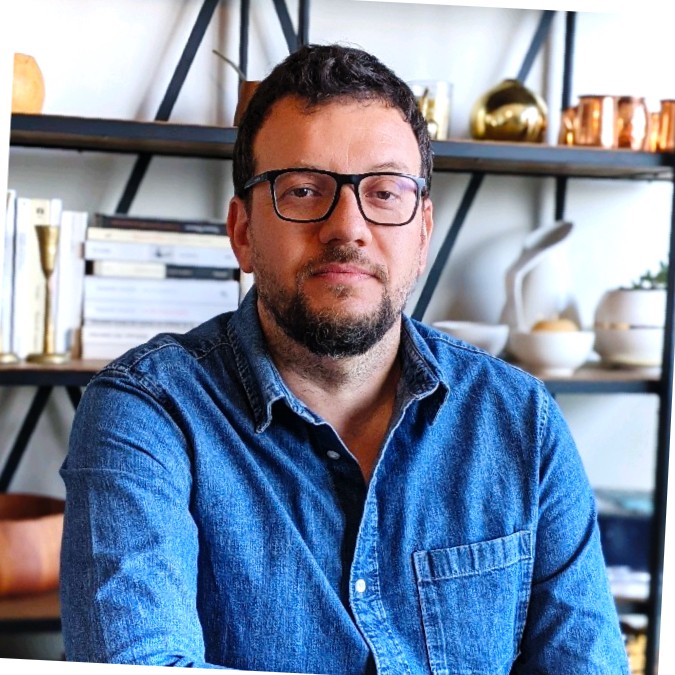Sparring about your Lean issue?
Call René
The lean-journey of the Engineering and Maintenance Department of Colombian airline Avianca proves the importance of leadership taking the lead on change.
Interviewees: Albert Pérez and María Fernanda Sarmiento
Lean Institute Colombia: How did your journey to Lean begin?
Albert Pérez: Lean concepts have been applied in the airline industry before, with some success. Several airlines started lean transformations with the help of consulting firms and achieved reasonable results. I say "reasonable" and not "good," because these initiatives usually focused more on tools than cultural change. You saw kaizen workshops, value stream mapping exercises, and so on, but I didn't see any real change in culture. Or at least it wasn't happening as quickly as I had thought at the time. When I joined Avianca, an organization of 12,000 people with more than 100 years of experience in the airline industry, there was a lot going on, and I quickly realized that whatever we did would have to start with the culture. When we started talking about lean , the team's first reaction was, "We've tried it two or three times and it didn't work." Their experience was that the changes implemented had worked for a while and then disappeared.
María Fernanda Sarmiento: Our idea of lean was informed by the traditional consulting approach, where coaches came to redesign processes themselves, without input from the value creators. So until the consultants were there, people followed the new process, but once they left, they returned to the old way of working.
AP: Our last effort was in collaboration with Lean Institute Colombia. From the beginning, we realized that their approach was different. For example, there was a strong focus on the management system, on leadership and on culture.
LIC: What opportunities for improvement have you identified?
AP: The first thing we realized was that we were solving problems at the wrong leadership level. For example, some problems were being escalated and resolved by the VP when they should have been resolved by the operations team. Of course, our goal was to deliver on our promise of safety and quality in aircraft delivery.
We were intensely concerned with the details of the operation. I don't think there is necessarily anything wrong with that, but it has to be done in the right way. We had a daily virtual meeting attended by more than 100 people from all areas explaining what had happened that day. The tendency was to jump to solutions without fully understanding the root cause of problems. Leaders gave the solutions and people implemented them without sharing their point of view or challenging them. If your boss gives you the solution, well ... that's it, right? That's actually a bad and dangerous dynamic.
We understood then that we had to change the way we manage our daily work. To do that, and to start seeing results, we had to change our way of thinking, our behavior and our way of running the business.
MFS: The leadership levels at which problems had to be solved were fully integrated. It was not really delegating to the higher level; it was more waiting for the person higher in the hierarchy of the company to solve the problem.
When we, senior leaders of the Engineering and Maintenance Department, started working to empower people to solve the problems related to their level and their work, the planets aligned. At the same time, Avianca decided to turn the corporate culture on its head and focus more on the critical values of empowerment and responsibility. That created a synergy between the cultural shift the company was making and what our department was doing with the help of Lean Institute Colombia. This ultimately allowed us to make the changes we envisioned.
LIC: We know how important it is for the leader to be an early adopter of lean practices, and we saw that with you, Albert. You were brave enough to change your own way of leading. What was that experience like?
AP: When I joined Avianca, I went straight to Operations to really get to know the work. Again, I think that's a good thing and we should continue to do that more and more to really understand our people's problems. But in the beginning I made a mistake: instead of enabling the organization to solve problems, I wanted to solve it all myself.
I think that was because of the sense of urgency I felt to get results and to try to change our culture. In the old meeting, there were attempts to solve problems, but we came to "solutions" very quickly and I saw that the system was not working. Our approach had to be different. Before, I was giving solutions left and right and many problems ended up on my desk. I realized then that it would be easier if everyone solved the problems they needed to solve. It would make my life easier and give me more time to support people on the gemba. Besides, it would be good for the organization. So I freed myself from the obligation to solve everything and let my team, which has the necessary preparation and experience to make the right decisions, take charge.
LIC: What have you accomplished in the past few months?
AP: First of all, people are happier to work with us. When someone feels respected and feels that their technical, professional and personal background is taken into account and used to improve the organization at all levels, they feel more motivated to work at Avianca and are encouraged to stay. We still have a long way to go, but we have already reached a point where people enjoy coming to work, find meaning in their work, feel that they are participating and that the company is improving.
Then there are the results. Of course there are ups and downs, but we are working more and more toward the indicators we have established. The ups and downs are due to the context we are influenced by and the internal performance of the company, but we have already achieved improvements. In the aviation industry, we put a lot of emphasis on keeping aircraft on the ground as short as possible and making sure they are always airworthy and safe to operate. Our aircraft generate value for our customers when they fly. Right now, we are focusing on improving the availability and on-time delivery of our aircraft. When we get results, people feel engaged and are more willing to continue the improvement work.
THE INTERVIEWEES



Sign up for our newsletter